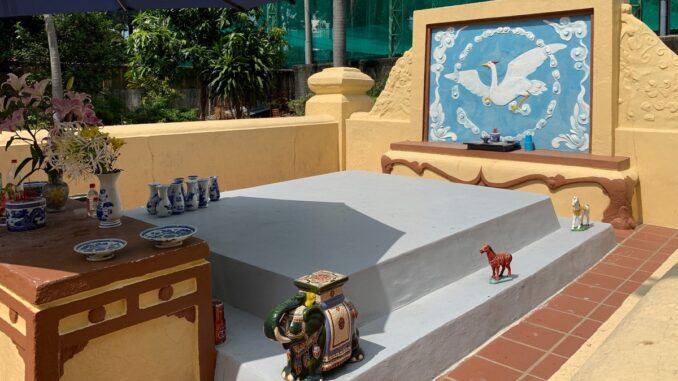
When he died, General Vo Tanh, a one-hearted follower of Lord Nguyen Anh, built two tombs in Gia Dinh to remember the merits.

Vo Tanh (1768 – 1801), born in Bien Hoa (now Dong Nai province ), was a general under the tutelary god Nguyen Anh. In 1801, when the Tay Son army surrounded Quy Nhon citadel (now under Binh Dinh ), knowing that he could not keep it, Vo Tanh wrote a letter to the enemy hoping not to kill the soldiers and then “survived to the citadel”.
To remember the merits, in addition to building a tomb in Quy Nhon, Lord Nguyen Anh also works as a wind tomb, built a tomb for him in Gia Dinh. There is also a Vo Tanh wind grave founded by the people.
In Ho Chi Minh City, two tombs of Vo Tanh are located in Phu Nhuan and Tan Binh districts. The main tomb built by Lord Nguyen Anh is located on Ho Van Hue Street (Phu Nhuan District). The entrance to the mausoleum is a three-door gate, dating back to 1951.

Tomb area was built right after he died. The whole tomb is built solidly, not picky, the lines are perpendicular.

The front of the mausoleum has a pre-painted screen of a tiger, a popular image in Vietnamese folk life, a symbol of courage and mighty, capable of guarding the door of the five directions.

After the front screen is the tomb of more than 2 m wide, the two sides have a pillar, at the top of each pillar there is a large lotus bud. At the piers, there are pictures of mountains and rivers with typical fruits and vegetables of the South.

The grave is rectangular in shape, two-level jerky, 4 m long, 3 m wide and about 4 feet high. Inside the wax figure burial grave. At the end of the grave is the post-post screen depicting a crane picture, implying that the martial arts general rode the crane to heaven.

Next to the first mausoleum is the temple of General Vo Tanh, built simply, bearing the architectural features of Nam Bo village.

Inside the temple, there is simple architecture, basic interior such as incense sticks, wooden pillars, bags of lam, and diaphragm … are painted with gilded lacquer commonly found in the architecture of communal houses and pagodas in Vietnam.

Vo Tanh tomb area has an area of more than 2,000 m2, surrounded by a green garden. Previously, the tomb was located in the military area, until the 1990s it was handed over to Phu Nhuan district. From 2006-2007, the tomb and temple were restored and upgraded; at the same time, to build more protective houses and protective fences like the present one.

Another wind grave of Vo Tanh on Nguyen Thai Binh street (Tan Binh district) with a smaller scale, lies under the canopy of an old root.
Legend has it that this tomb was set up by the people in the area to scent the smoke of the Martial General – who had faithfully and courageously pleaded for the preservation of his soldiers’ lives.

The facade of the tomb was rebuilt in a small am-style with a fake roof made of cement. The front side is divided into three small cells, before each cell is placed with incense bowl.

The tomb is about 10 m long, about 7 m wide, surrounded by walls, four corners of the tomb are built with pillars.

This wind grave does not have a rear screen, but on the wall there are animal-shaped reliefs, flowers … have been cracked. Around the grave, people often leave vehicles, furniture or trade.
Follow vnexpress
